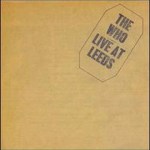 Sonic Grade: D
Sonic Grade: D
A Hall of Shame Pressing
Universal Records 180 gram LP.
Flat as a pancake sound. The CD almost has to be better.
 Sonic Grade: D
Sonic Grade: D
A Hall of Shame Pressing
Universal Records 180 gram LP.
Flat as a pancake sound. The CD almost has to be better.
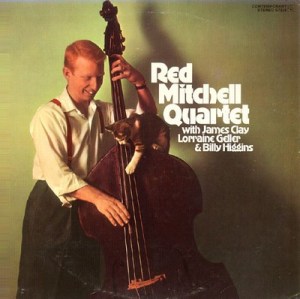
TWO SUPERB SIDES on quiet vinyl. This stunning copy of this Better Records fave has some of the best upright bass sound we’ve heard; it’s welll-defined with texture and weight. It’s also unbelievable dynamic and lively. The clarity and transparency are mindblowing here. We went crazy over the huge soundfield on this copy — wall to wall, floor to ceiling, and then some.
We love the sound of Contemporary Records — it’s our favorite jazz label by a long shot. Roy DuNann always seemed to get The Real Sound out of the sessions he recorded — amazingly realistic drum sound; full-bodied, breathy horns; lots of top end extension; deep, note-like bass; weighty piano, studio ambience, three-dimensionality, and on and on.
The Sound of the Best Copies
Let’s face it: many reissues of this 1957 recording — this pressing is on the yellow ’70s label — have a veiled, dull quality to their sound. When they don’t, man, they can really beat the pants off even the best originals.
We get Black Label original Contemporary pressings in all the time, but few of them are mastered right and most never make it to the site. Some are pure muck. Some have bass so bloated that it’s hard to believe anyone would ever take that kind of sound seriously.
Don’t buy into that record collecting slash audiophile canard that Original Equals Better. That’s bullshit. Records don’t work that way, and anyone with two good ears, two good speakers and a decent-sized record collection should have learned that lesson a long time ago. The fact that a minority of audiophiles and record collectors actually do understand these things is a sad commentary on the state of reproduction in the home. But that’s another story for another day. (more…)
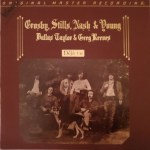 Letters and Commentaries for Deja Vu
Letters and Commentaries for Deja Vu
More Crosby / More Stills / More Nash / More Young
Sonic Grade: F (or not!)
Just for fun about 10 years ago [make that 20] I pulled out a MoFi pressing of Deja Vu I had laying around. I hadn’t played their version in a long time. I could have gone a lot longer without playing it, because what I heard was pretty disappointing. Playing their record confirmed all my prejudices. The highs sizzled and spit. The heart of the midrange was recessed and sour.
Know what it reminded me of? A bad Japanese pressing. (Since most of them are pretty bad I could have just said a typical Japanese pressing, but that’s another story for another day.)
And if that’s not bad enough, the bass definition disappeared. Bass notes and bass parts that were clearly audible and easily followed on our Hot Stamper copies were murky, ill-defined mud on the MoFi.
If you own the MoFi you owe it to yourself to hear a better sounding version. You really don’t know what you’re missing.
But Then, A Few Years Later We Played This Copy…
Here is what we had to say at the time:
Hot Stamper Sound on the MoFi pressing of Deja Vu, can it be possible? I have NEVER heard the MoFi sound this good, not even close. This just KILLS the other copies I’ve heard. I wrote a scathing review of their badly mastered pressing which you can read below, and I still stand behind every word, because this copy is not your average MoFi. The average one still sucks. What we are selling here is a FLUKE. Here is the story from our Hot Stamper shootout we just did.
This week we picked up a very clean looking MoFi pressing and decided to throw it in the shootout just for fun. We were shocked — this one actually sounded good! Not as amazing as our best Hot Stampers, but much better than we had expected. We checked our old copy and heard the same bad sound described above.
Pressing variations exist for audiophile records as well, and here was another example. It just goes to show that nothing short of playing a record will tell you how it sounds — except for reading our website. Who besides us could spend so much time playing so many bad records? It’s a dirty job, but we’re happy to do it. Hearing one amazing record makes up for playing 10 bad ones, so we’ll keep at it.
Keep in mind that the only way you can never be wrong about your records is to simply avoid playing them. If you have better equipment than you did, say, five or ten years ago, try playing some of your MoFi’s, 180 gram LPs, Japanese pressings, 45 RPM remasters and the like. You might be in for quite a shock.
It’s all good — until the needle hits the groove. Then you might find yourself in need of actual Better Records, not the ones you just hoped were better.
Further Reading
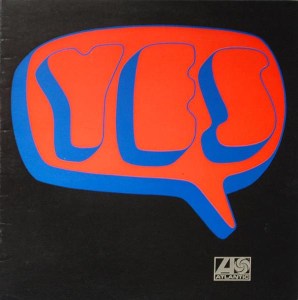
Consider taking the following Moderately Helpful Advice concerning the pressings that have the best sound, to wit:
Although the UK first label originals will always win our shootouts, the early UK reissues on the Red and Green label can still sound quite good on the right pressing.
Skip all domestic copies of this album, as well as the next one. They are clearly made from dubbed tapes.
I wish I could say that this was the sonic (or musical) equivalent of Fragile of The Yes Album — or even the second album, Time and a Word — but that’s simply not the case. Still, there’s a lot to like here and it’s fun to hear the band developing their style and growing into the pop-prog behemoth they would become with their third release.
What shootout winning sides such as these have to offer is not hard to hear:
No doubt there’s more but we hope that should do for now. Playing the record is of course the only way to hear all of the above. (more…)
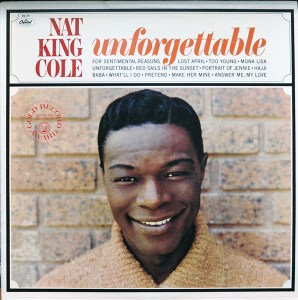
Our shootout winner here had the clearest, most natural vocals, with a living, breathing Nat King Cole front and center. Hard to believe some of these songs date back to 1946, with the most recent being from 1954. No matter; whatever the limitations of the recording technology, they knew enough of what they were doing to get Nat’s voice consistently right for practically every track.
One of the key elements we noticed on the best of the best was the relaxation in Nat’s performance. He sings so effortlessly on the best copies; on other pressings you often don’t notice that casual quality.
Warmth and sweetness were nearly as important, the distinctive and unmistakeable hallmarks of vintage All Tube Analog. Each of these qualities combined to make the music on these sides as thoroughly involving and enchanting as any album of its kind we have ever offered.
The Hunt
Naturally we’re always on the lookout for Nat King Cole records with good sound. In our experience finding them is not nearly as easy as one might think it would be. Far too many of his recordings are drenched in bad reverb, with sound that simply can’t be taken seriously — fine for old consoles but not so good on modern audiophile equipment.
At least one we know of has his voice out of phase with the orchestra on most copies, which put a quick end to any hope of finishing the shootout we had started.
If anything the sound on his albums gets even worse in the ’60s. Many of Nat’s albums from that decade are over-produced, bright, thin and shrill. (more…)
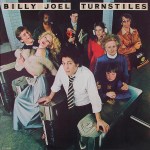 More of the Music of Billy Joel
More of the Music of Billy Joel
Reviews and Commentaries for the Music of Billy Joel
On side two Prelude/Angry Young Man were key test tracks. The biggest, richest copies with the most space were the ones that consistently brought out the best in the songs and individual performances of the players.
Summer, Highland Falls is a great test — listen for breathy vocals, a full piano, a clear snare drum once it comes in and, most importantly, an energetic performance. You will need all four to score well in one of our shootouts.
Note that the first track on side one has a tendency to be a bit brighter than those that follow.
Those of you who’ve been with us for a while know that we are big fans of Songs in the Attic, the live album Joel released in 1981 after The Stranger, 52nd Street and Glass Houses all went to the top of the charts.
More than half of the songs on SITA come from this very album: Say Goodbye to Hollywood, Miami 2017, Summer, Highland Falls, Say Goodbye to Hollywood and I’ve Loved These Days. These are the songs from his fourth album that Joel felt were unfairly overlooked and most wanted you to hear.
We were favorably impressed with just how good the sound can be on a great pressing like this (quite a bit better than Songs in the Attic for sure). We’ve played a ton of copies of this one over the years but most copies left us unmoved. Here you get real weight to the piano — essential for any Billy Joel album — and big, punchy drums.
Note that the orchestra was recorded at the famed Columbia 30th Street studios.
More of the Music of Carole King
Reviews and Commentaries for Tapestry
Notice how the third track on side two, Will You Still Love Me Tomorrow, which Carole wrote when she was only eighteen and which became a big hit for The Shirelles, is actually the best sounding song on the entire album.
I have a theory that this song was recorded toward the end of the sessions, and the reason it sounds so good is that it took them until then to figure out how to do it. This is no Demo Disc by any means. The recording itself seems to have shortcomings of every kind from track to track. Perhaps as they made their way through the sessions they were learning from their mistakes, mistakes that no one could go back and fix without starting all over again, and by the time they got to this track they had it all figured out. Of course that is just a guess, nothing but speculation on my part. Regardless of the cause, see if you don’t hear what I’m talking about.
Carole, We Love You
We went nuts for this album during our big shootout. Since most of the time we’re playing testosterone-fueled, raging classic rock, it was a nice change of pace for us — and certainly easier on our poor eardrums! Our man JT makes an appearance playing acoustic guitar on a number of tracks, most notably You’ve Got A Friend, and his pals Russ Kunkel and Danny Kootch turn up too, with Kootch handling most of the electric guitar duties.
What’s surprising, if you haven’t played this album in a while, is how good non-hit tracks like “Home Again” can be. But there aren’t many of those non-hits on this album, and that’s a good thing; almost every song was a hit or received a lot of radio play. The quality of the material is that good.
More of the Music of Loggins and Messina
Practically any copy you find will have a bit of a boost in the bottom end. The kick drum really kicks on this album, more than it should in fact.
The elements that make up a good sounding Loggins and Messina album can be found, in varying degrees, on all the Hot Stamper pressings we offer. Permit us to break them down for you. (We’ve borrowed heavily from ourselves here so if this material looks familiar don’t be surprised, we’ve used it before.)
Top End Extension
Absolutely critical to this record. Most copies of this album have no extreme highs, which causes the percussion and guitar harmonics to be blunted and dull. Without extreme highs the percussion can’t extend up and away from the other elements in the mix. Consequently these elements end up fighting for space in the midrange and getting lost in the dense mixes that Jim Messina favors (and we audiophiles love).
Clarity and Presence
Equally critical. So many copies are veiled in the midrange, partly because they may have shortcomings up top, but also because they suffer from blurry, smeary mids and upper mids. With so many stringed instruments; horns and woodwinds (oboe, saxes, flute, recorder); as well as plenty of percussion elements in the mix for practically every song, dull, dead sounding L & M pressings can’t begin to communicate the musical values in their superb recordings. Boredom will set in before long.
With a real Hot Stamper the sound is TOTALLY INVOLVING, and so is the music! You hear the breath in the voices, the pick on the strings of the guitars and mandolins — these are the things that allow us to suspend our disbelief, to forget it’s a recording we’re listening to and not living, breathing musicians.
Transparency
Although this quality is related to the above two, it’s not as important overall as the one below, but it sure is nice to have. When you can really “see” into the mix, it’s much easier to pick out each and every brass and wind instrument, and hear all the effects on the guitars, in order to gain more insight into the arrangement and the recording of the material.
Seeing into the mix is a way of seeing into the mind of the artist. To hear the hottest copies was to appreciate even more the talents of all the musicians and producers involved, not to mention the recording engineers.
Bass
No rock or pop record without good bass can qualify as a top quality Hot Stamper. How could it? It’s the rhythmic foundation of the music, and who wants a pop record that lacks rhythm? L&M are famous for putting plenty of bass on their records; this album is no exception. Bass is a big part of their sound. The best copies have prodigious amounts of deep, note-like, well-controlled bass. If you have a high-fidelity full-range system, this is some serious Demo Disc Quality Pop Sound.
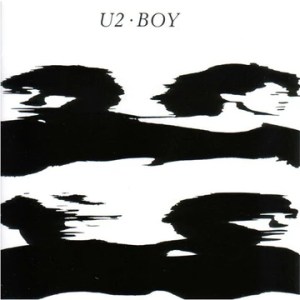
Recordings from the ’80s are always a bit tricky in terms of sound quality, and U2 is not a band we have ever associated with the highest audiophile-quality sonics. We’ve been through quite a number of their albums now, including War, The Unforgettable Fire and The Joshua Tree.
While Demo Quality Sound may never be in the cards for these guys, over the years we’ve stumbled upon (stumbling being the only way to go about it) pressings that are much better at communicating their music than others, and certainly a great deal better than any Heavy Vinyl reissue or digital source. (more…)
 Reviews and Commentaries for the Music of Queen
Reviews and Commentaries for the Music of Queen
More records that often display side to side differences
The best sounding side ones were rarely as good as the best sounding side twos.
Even the good side ones tended to have a trace of harmonic distortion and compression that is simply nowhere to be found on the good side twos. How and why this is we have no idea. Since every copy had the same sonic issues, we discounted it in our grading. Only the better copies bring the hits on side one to life and give them the size and power we know they can have.
One of the qualities we don’t talk about nearly enough on the site is the SIZE of the record’s presentation. So many copies of this album just sound small, or at least smaller — they don’t extend all the way to the outside edges of the speakers, and they don’t seem to take up all the space from the floor to the ceiling. Other copies do. They create a huge soundfield from which the instruments and voices positively jump out of the speakers. When you hear a copy that can do that, needless to say (to anyone on this site), it’s an entirely different listening experience.
Dirty Little Secrets
The Game is clearly one of the two best sounding records Queen ever made. The Dirty Little Secret of Queen’s recorded output is that most of their albums have mediocre sound, and often they’re downright dreadful.
Do you see a lot of Queen albums going up on the site? The demand is there, but where is the supply?
There’s a good reason for their scarcity as Hot Stampers. As much as people might love to hear some top quality pressing of Queen on vinyl, we just can’t seem to find many that do their brand of multi-layered Big Production Rock justice.
Take A Night at the Opera for example. Isn’t it supposed to be a good sounding record? I’ve played twenty of them over the last ten years — imports, domestics, the DCC, the MoFi – and practically none of them sounded as good as I was expecting. If you think the album is well recorded, don’t just rely on your memory. Pull out your own copy and listen to it closely; you should hear the same distortion and smearing and transistory grain that’s on all the copies I’ve played.
It’s a record that’s trying to sound good but just doesn’t — so far anyway.
[GOOD NEWS – We now know which pressings sound good, and they sound very good indeed!]
Hope springs eternal, and of course we will keep looking, but for now the Queen titles we know to have the potential to sound good are pretty much limited to A Day at the Races, News of the World and The Game.